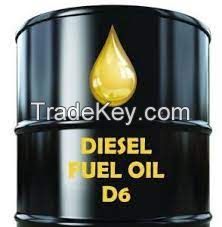Description
Diesel Fuel D6
Diesel fuel is a mixture of hydrocarbons obtained by distillation
of crude oil.
The important properties which are used to characterize diesel fuel
include cetane number (or cetane index), fuel volatility, density,
viscosity, cold behavior, and sulfur content.
Diesel fuel specifications differ for various fuel grades and in
different countries.
Diesel—whose first engine concept was designed to use coal dust as
the fuel. recognized that liquid petroleum products might be better
fuels than coal.
The engine was re-designed for operation with liquid fuels,
resulting in a successful prototype in ***5. Both the engine and
the fuel still bear the name of Diesel.
Diesel fuel is a mixture of hydrocarbons—with boiling points in the
range of **0 to **0°C—which are obtained from petroleum. Petroleum
crude oils are composed of hydrocarbons of three major classes: (1)
paraffinic, (2) naphthenic (or cycloparaffinic), and (3) aromatic
hydrocarbons. Unsaturated hydrocarbons (olefins) rarely occur in
the crude. It should be noted that the terms paraffinic and
naphthenic seem to be obsolescent; we use them because they are
still common in the petrochemical industry. In modern chemistry,
the respective groups of hydrocarbons are called alkanes and
cycloalkanes.
